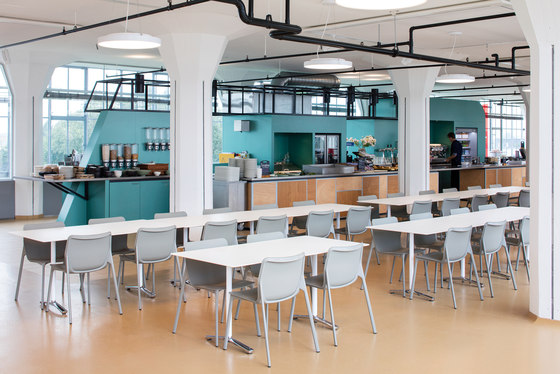
Fotógrafo: Stijn Poelstra
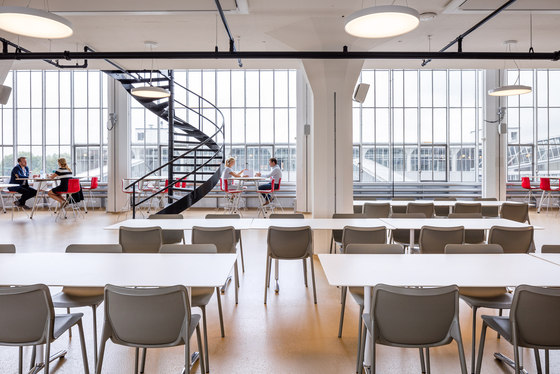
Fotógrafo: Stijn Poelstra
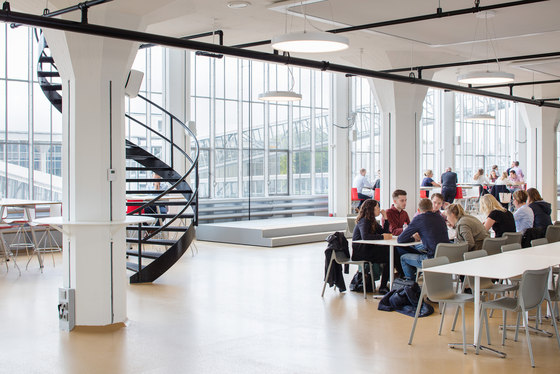
Fotógrafo: Stijn Poelstra
Van Nelle Factory lunch restaurant with Chassis, Ceno and Aline:
The Simultaneity of Modernism
Chassis, Aline, Ceno: right on time for the start of the bi-national Simultaneity of Modernism cultural project in autumn 2016, architects Wessel de Jonge have fitted out the Van Nelle Factory’s redesigned lunch restaurant in Rotterdam with Wilkhahn furniture. Consequently, the modernist tradition (which connects the furniture manufacturer’s Bauhaus design roots with the Van Nelle Factory) again manifests itself in this site of exceptional historic-cultural value. The Van Nelle Factory has been a UNESCO World Heritage Site since 2014 and the headquarters of Wilkhahn’s Dutch branch since 2001.
“Light, air and space” was the theme that entrepreneur Kees van der Leeuw specified for the design of the Van Nelle Factory in Rotterdam at the time. The building was constructed along the plans of architects Jan Brinkman and Leen van der Vlugt in 1931. The fact that the original spirit permeates through the structure today is very much due to the sensitivity with which Rotterdam-based architects Wessel de Jonge redeveloped and refurbished the factory after it was shut down in the 1990s. By 2004, the icon of international style had been turned under their stewardship into a contemporary centre for the creative industry and Wilkhahn located its Dutch branch there.
For the start of the current German-Dutch Simultaneity of Modernism cultural project, which broaches the issue of the simultaneousness of design development at the Bauhaus Dessau and Van Nelle Factory Rotterdam World Heritage Sites, Wessel de Jonge have now transformed the existing café into a new lunch restaurant. It’s located on the second storey of the middle building section – where coffee roasting used to take place. The design objective was to reflect more strongly the way the room used to look like in the past. Therefore, the restaurant’s floor plan is geared to the original position of the machinery. At the same time it was the ideal opportunity to provide for totally different seating arrangements and communication spaces. The communication and eating options now range from room-in-room systems to informal groups of seating and podiums to gather and chat on, or long communal tables for big parties to savour a meal at. And while the food counter resembles a patchwork of old tea chests, the architects drew on historical material for the choice of colourways. Ochre yellow and white are the basic colours, with petrol blue metallic surfaces and black varnished linear elements as contrasts.
At the core of the new lunch restaurant lies a central row of tables with pale grey Chassis chairs at Aline tables (design: Andreas Störiko). The HPL table tops, just 12 mm thick and with chamfered lipping, the slender table columns and die-cast aluminium foot sections have an industrial appeal. Munich-based designer Stefan Diez used a deep-drawing procedure (customary in automotive manufacturing) to develop Chassis. The origins of its design also place it in the industrial context of modernism. The combination therefore is ideal for the Van Nelle Factory. A presentation space adjacent to the restaurant features Wilkhahn’s cushioned all-rounder Ceno (design: Läufer & Keichel, Berlin), an elegant chair for auditoria and their exceptional demands when it comes to comfort.
Architekten: Brinkman & van der Vlugt (1925-31)
Leitung Umbau und Sanierung: Wessel de Jonge Architecten (1999-2004)
Innenarchitektur Lunch Restaurant: Wessel de Jonge Architecten (2016)
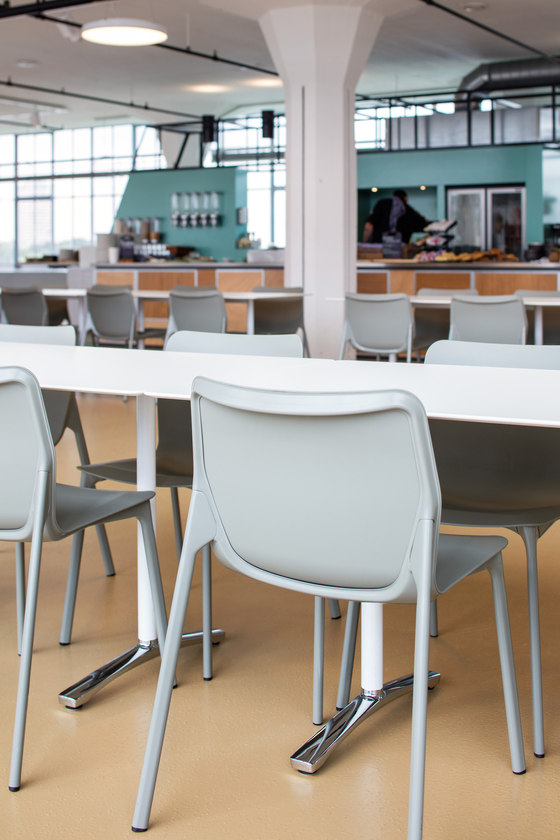
Fotógrafo: Stijn Poelstra
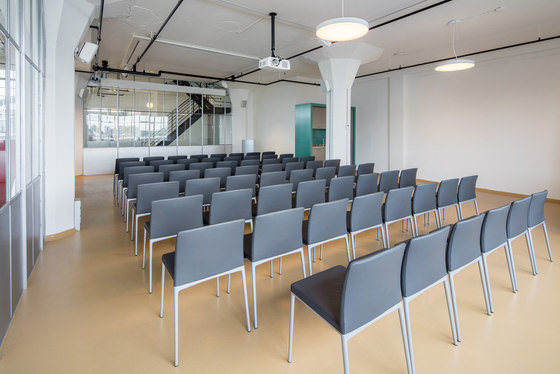
Fotógrafo: Stijn Poelstra
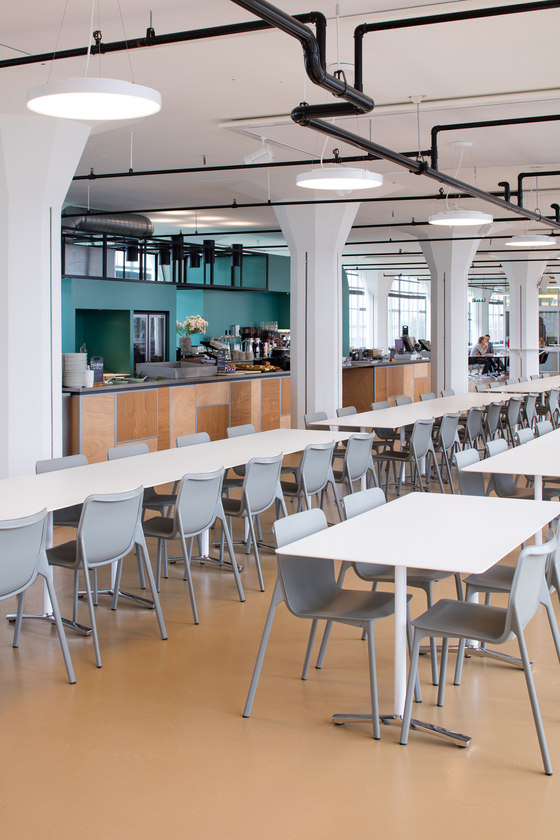
Fotógrafo: Stijn Poelstra
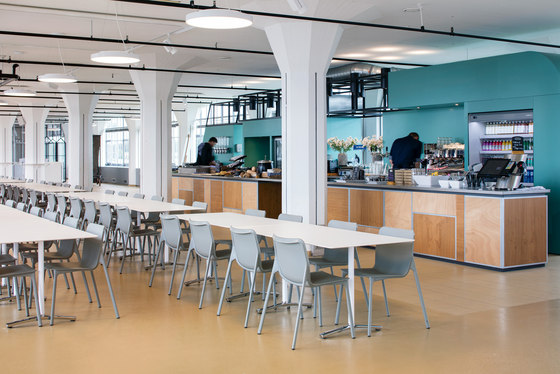
Fotógrafo: Stijn Poelstra

Fotógrafo: Stijn Poelstra
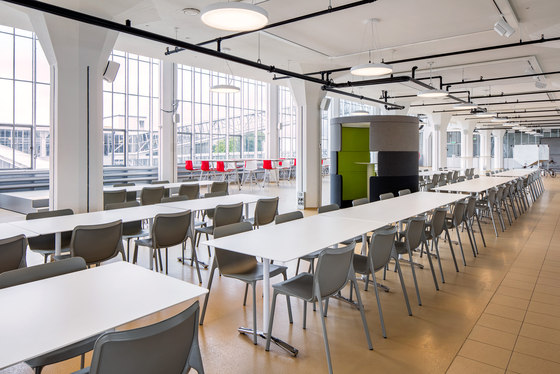
Fotógrafo: Stijn Poelstra
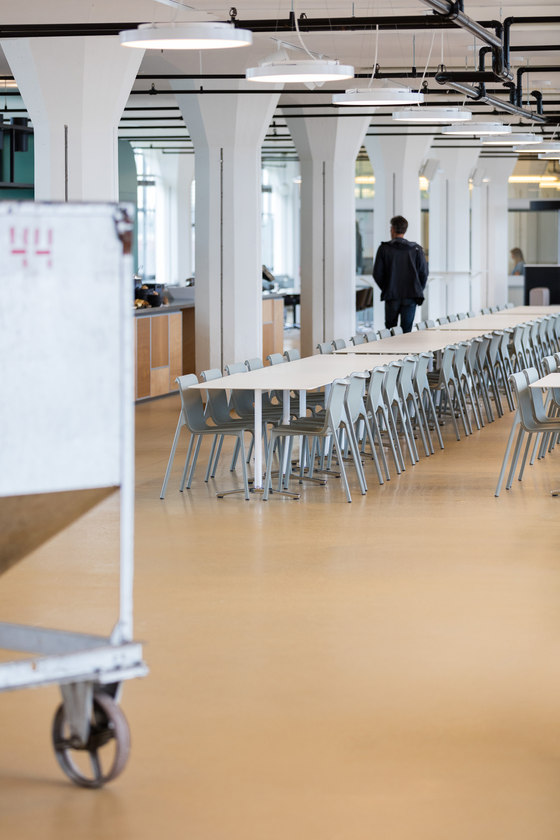
Fotógrafo: Stijn Poelstra










